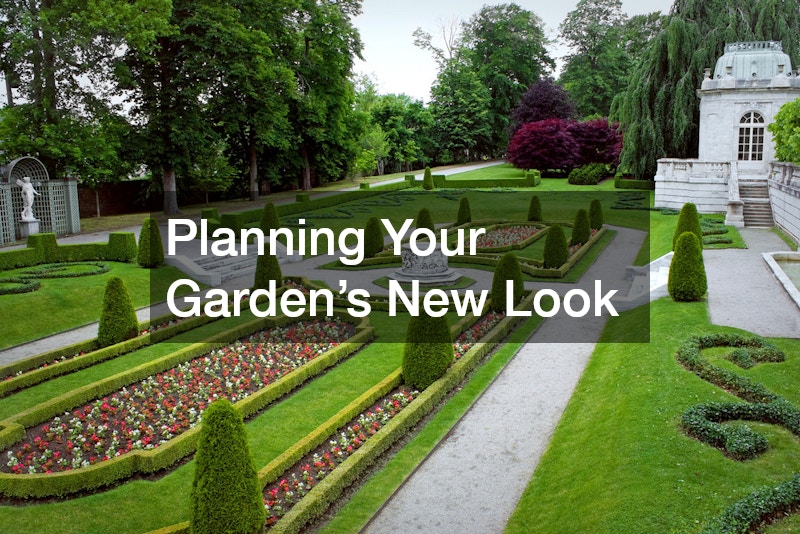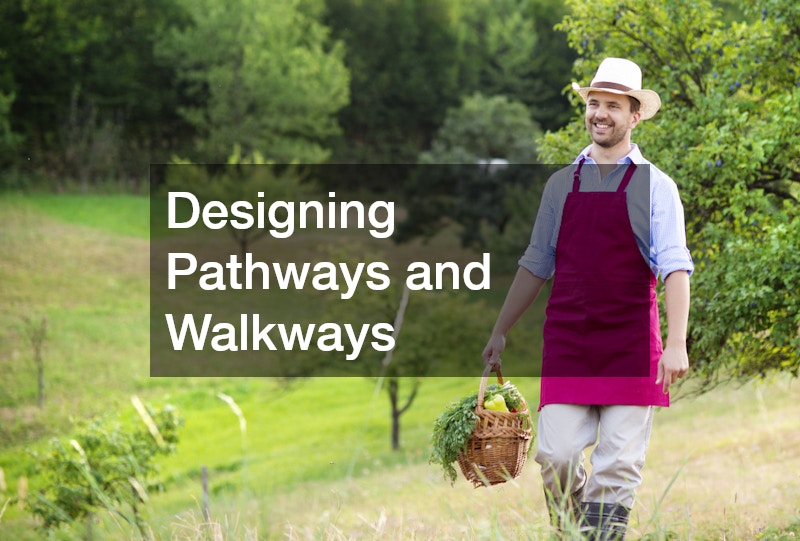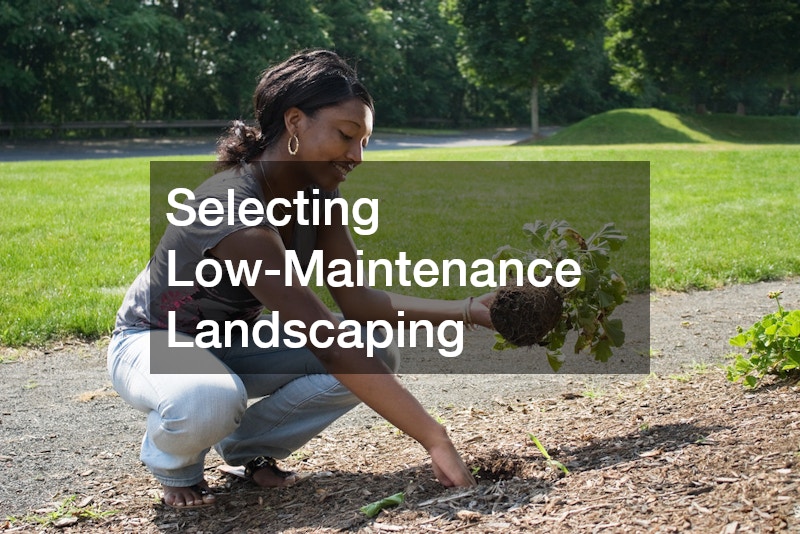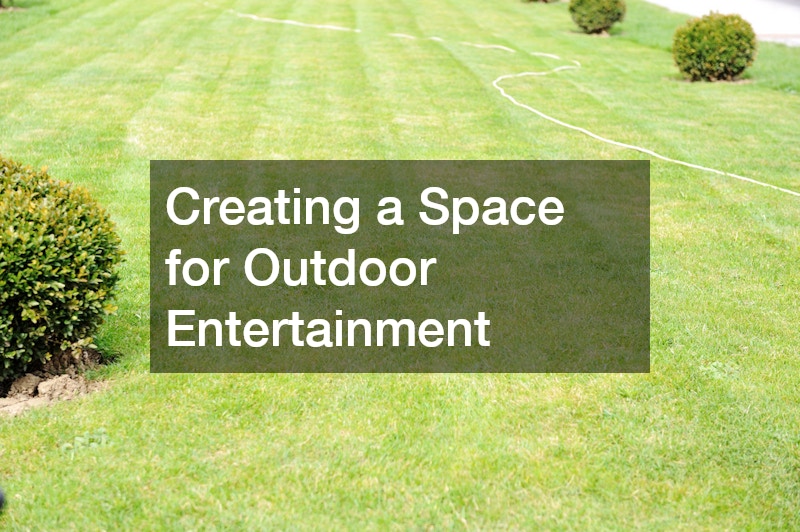Beginning Your New Garden Project
Revamping your garden can be an incredibly rewarding project that brings beauty, relaxation, and a touch of nature closer to home. Whether your garden is a spacious backyard oasis or a cozy green nook, the process of transformation involves planning, creativity, and thoughtful execution. Before diving in, consider the specific elements you want to incorporate, such as lush greenery, hardscape features, or inviting spaces for social gatherings. This preliminary stage is an excellent opportunity to gather tips and advice on the practical aspects of gardening, from selecting plants to managing watering needs and beyond.

Planning Your Garden’s New Look
When planning a fresh look for your garden, consider not only its aesthetics but also its functionality. A well-organized plan includes identifying areas for plants, pathways, seating, and any additional decorative elements like lighting or water features. Think about how these areas will interact and flow together, creating a garden that feels unified and inviting. Planning also involves considering plant sizes and how they will change over time, ensuring that your garden remains beautiful and balanced as plants grow. By sketching or visualizing a layout, you can make more informed decisions about what will work best for your space. Many people find it helpful to break the garden into sections, allowing them to focus on each aspect individually while keeping the entire layout cohesive.
Once you have a layout, it’s essential to include practical components, like a garden watering system. Installing an efficient watering system can make a huge difference in the garden’s long-term health and ease of maintenance. A thoughtfully placed garden watering system ensures that plants receive consistent moisture without over-saturating or under-watering certain areas.
Choosing Plants for a Thriving Garden
The plants you choose for your garden are a critical element of its beauty, sustainability, and overall vibe. Selecting plants that suit your climate and soil conditions can make a world of difference in how well they thrive and how much care they require. Begin by considering the role of each plant in the garden: will it provide shade, add height, offer seasonal color, or create a lush ground cover? Additionally, choosing a mix of perennials and annuals can help maintain a balanced garden that looks vibrant year-round. Perennials are often a great choice for low-maintenance landscaping since they return year after year, while annuals add seasonal variety. The types of plants you select will also influence the local ecosystem, so consider including a variety that supports local pollinators like bees and butterflies.
When deciding on specific plants, a local nursery can be an invaluable resource. Local nurseries typically offer plants that are well-suited to the area, making them more likely to thrive in your garden. The staff at a nursery can provide tips and advice on plant care, including sunlight, watering, and soil requirements, as well as any regional pests to look out for.

Designing Pathways and Walkways
Pathways and walkways serve as both functional and aesthetic elements in a garden, guiding visitors through the space while adding a structured visual appeal. A well-designed pathway can enhance the flow of your garden, connecting different areas and creating a sense of discovery as you move from one part to another. Materials like stone, brick, and gravel offer unique textures and styles, allowing you to tailor pathways to match the overall theme of your garden. Whether you prefer a natural, winding look or a more formal, straight path, thoughtfully designed walkways can elevate your garden’s overall ambiance.
Working with a paving company can help you achieve a professional finish for these pathways, ensuring durability and longevity. A paving company can recommend the best materials for your specific climate and soil conditions, ensuring that your walkways remain resilient through seasonal changes. For those wanting minimal maintenance, tips, and advice from a paving company can be valuable, offering guidance on installation techniques that reduce weed growth and water pooling.
Incorporating Garden Lighting
Garden lighting is a powerful tool for enhancing both the safety and beauty of your outdoor space. Strategically placed lights can highlight pathways, showcase focal points like plants or statues, and create a welcoming atmosphere for evening gatherings. Lighting options range from solar-powered fixtures to wired lights, offering flexibility to suit any garden size or layout. Ambient lighting helps to extend the use of the garden into the evening hours, transforming it into a magical space after dark. Tips and advice on selecting energy-efficient options help reduce energy costs and minimize environmental impact, especially with solar-powered lighting gaining popularity.
When installing garden lighting, it’s essential to avoid areas where soil contamination, like sediment toxicity, might be a concern. Sediment toxicity can sometimes affect plant health and soil quality, especially in areas where chemicals have previously been used. Identifying and addressing any issues with sediment toxicity can ensure that your lighting setup doesn’t disturb the garden’s natural balance.

Selecting Low-Maintenance Landscaping
Low-maintenance landscaping is an ideal choice for those who want a beautiful garden without a heavy commitment to upkeep. Selecting plants that require minimal care, using ground cover to reduce weeds, and choosing durable hardscape materials can all contribute to a low-maintenance design. Drought-tolerant plants and native species, for example, are excellent options as they are well-suited to local conditions and often need less water and care. Mulch and ground cover plants are also beneficial for reducing weeds and retaining soil moisture, making it easier to keep the garden looking fresh with minimal effort.
A practical method to achieve a low-maintenance garden is forestry mulching, which involves using mulch derived from wood chips or forest materials. Forestry mulching not only helps to suppress weeds but also enriches the soil with organic matter, enhancing its quality over time. This technique is especially useful for larger gardens or areas where you want to reduce maintenance demands.
Adding Garden Furniture and Decor
Incorporating furniture and decor into your garden can transform it into a more inviting and functional outdoor space. When adding these elements, consider your overall vision and the aesthetic you wish to create. Garden furniture can range from simple benches and chairs to full outdoor dining sets, each bringing a different feel to the area. Adding decorative pieces like sculptures, planters, or lanterns further enhances the garden’s ambiance, offering unique focal points and making the space feel more personalized. With the right selection of furniture and decor, your garden can become a true extension of your home, providing comfort and beauty in an outdoor setting. Tips and advice on selecting durable, weather-resistant materials can be particularly useful if you’re aiming for long-lasting decor that will withstand seasonal changes.
Another option to consider is local hardscapes installation, which can provide a sturdy and visually appealing foundation for garden furniture. Hardscapes, like patios or stone pathways, create defined spaces that make garden furniture more practical and usable. By installing a patio, you can establish a dedicated space for seating or dining, while stone pathways guide movement throughout the garden. Local hardscapes installation also offers the benefit of expert knowledge of materials that suit the area’s climate and conditions, ensuring a functional and enduring addition.

Creating a Space for Outdoor Entertainment
Designing your garden with outdoor entertainment in mind opens up countless possibilities for gatherings with family and friends. A well-planned entertainment area can accommodate everything from casual lounging to barbecues and larger celebrations. Think about what features would enhance the experience for your guests, whether it’s a fire pit for evening warmth, a covered seating area for shade, or a spacious area for dining. Adding built-in features, such as outdoor kitchen equipment or a grilling station, can also elevate the entertainment space, making it even more convenient to host gatherings. Having a designated area for entertaining not only makes the garden more versatile but also increases the overall enjoyment you can get from the space throughout the year.
If you want to build a stable base for this entertainment area, consider using materials like crushed stone, which offers a durable foundation while still allowing for proper drainage. Crushed stone delivery services can provide the exact quantity you need, making the installation straightforward and cost-effective. The crushed stone works especially well as a foundation for seating areas, pathways, or even fire pits, ensuring stability without the maintenance requirements of grass or soil.
Using Water Features to Enhance Appeal
Adding water features to a garden creates a calming, sensory experience that can greatly enhance its appeal. From small fountains and birdbaths to larger ponds, water features introduce movement and sound, adding to the atmosphere and aesthetic of the space. They serve as eye-catching focal points, drawing attention and providing a sense of tranquility. When selecting a water feature, consider the size of your garden’s layout; smaller gardens may benefit from compact fountains, while larger spaces can accommodate ponds or streams. Including water elements doesn’t just beautify the garden—it also supports wildlife by providing a water source for birds, butterflies, and other small creatures.
To maintain these features, a reliable water well pump may be necessary, especially for larger water installations like ponds or waterfalls. The pump ensures that water circulates, keeping it clean and preventing stagnation. This feature is essential for maintaining a healthy and attractive water element in the garden. Installing a water well pump with an adjustable flow rate also lets you control the speed and volume of water, creating the ambiance you desire.
Maximizing Small Garden Spaces
For those working with limited outdoor space, maximizing every inch of the garden becomes essential. Small gardens can be just as beautiful and functional as larger ones with the right design approach. Vertical gardening, using compact plants, and creating distinct zones are effective ways to make a small garden feel larger. Features like tiered planters, trellises, and wall-mounted pots help bring in more greenery without taking up ground space, while reflective surfaces or light-colored materials can make the area feel more open. With careful planning and some creative tips and advice, even a small garden can become a vibrant, enjoyable retreat.
In smaller gardens, drainage issues can arise due to limited soil space, making french drain installation a useful solution. French drains help to channel water away from plants and hardscapes, preventing waterlogging and soil erosion, especially during heavy rain. This simple yet effective system can be easily incorporated along the edges of a small garden to keep the soil balanced and plants healthy. With a well-planned layout and effective water management, even the most compact garden space can be optimized for beauty and functionality.
Maintaining Your Garden’s Fresh Look
Once you’ve transformed your garden, maintaining its fresh, vibrant appearance requires a bit of regular care. Routine tasks like pruning, weeding, and refreshing mulch are essential for keeping plants healthy and preventing overgrowth. Adding seasonal touches, like new flowering plants or fresh decor, can also keep the garden visually interesting. For larger gardens, scheduled maintenance ensures that each area remains well-kept and enjoyable. Simple maintenance tips and advice, like choosing hardy plants or utilizing efficient watering methods, can make it easier to keep the garden in top shape without excessive effort.
In some cases, more extensive work may be needed, especially if you want to expand or restructure certain areas. An excavation company can assist in clearing old, overgrown sections or removing unwanted debris to make space for new features. Professional excavation allows you to refresh or expand your garden layout without risking damage to other plants or structures. By combining regular maintenance with occasional updates, you can ensure your garden remains a lush and inviting space for years to come.
Utilizing Your New Garden
Revamping your garden is an exciting project that brings lasting rewards, transforming an ordinary outdoor area into a peaceful and personalized retreat. Whether your garden makeover involves selecting new plants, creating entertaining spaces, or incorporating water features, each element can be customized to suit your preferences and lifestyle. Thoughtful planning and the right materials, from hardscapes to mulching techniques, contribute to a garden that’s not only beautiful but also functional and sustainable. Embracing tips and advice on topics like low-maintenance landscaping and effective drainage can make the garden easier to care for, allowing you more time to enjoy its beauty.



